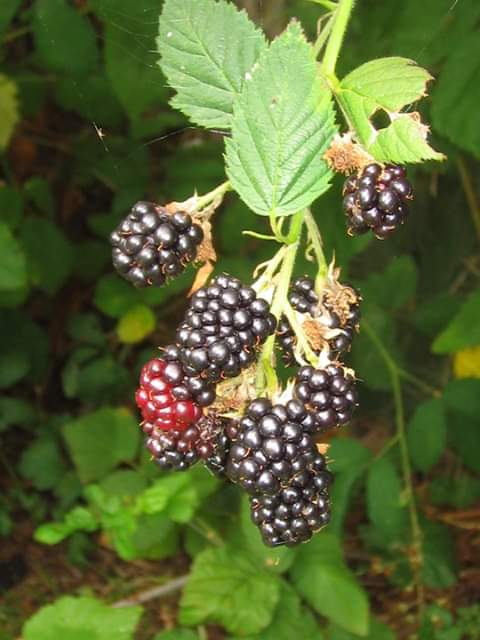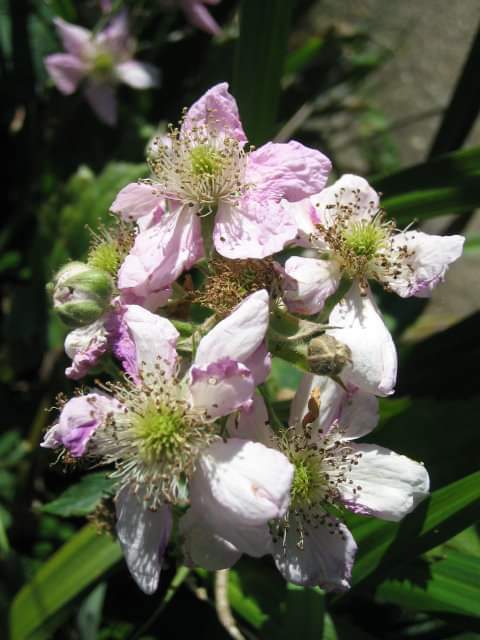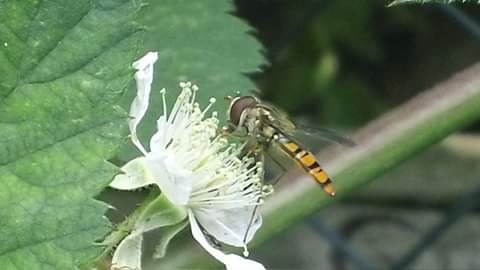An extract from ‘The Wild Food Garden’ by J A J Richardson, 2019
It is difficult to avoid the invasive nature of both the wild and semi-domesticated Blackberry (Rubus fruticosus) in the UK. Most areas of waste-land contain a few canes; making these plants easy to cultivate at home in the Wild Food Garden.
There are over 1000 micro-species of Blackberry in the UK alone; from the tiny and delicate wild Dew Berry to the larger cultivated (often thornless) varieties like Loch Tay. Although localised it is not uncommon to find as many as twenty individual varieties of Blackberry within a one mile radius – each with its own unique flowers, size, shape, scent, fruit and taste.
From a wildlife perspective, a thicket of Bramble perhaps provides more nesting opportunities for Bird-life than any other native species of plant in the UK. Dunnock (Prunella modularis), Blackbird (Turdus merula), Thrush (Turdus philomelos), Long-tailed Tit (Aegithalos caudatus), Robin (Erithacus rubecula) and Wren (Troglodytes troglodytes) all readily nest within the branches of mature Blackberry canes and bushes.
Flowering from May to September, the white/pink/purple flowers are a magnet for as many different species of insect. These include Bees, Butterfly, Hoverfly, Moths and Solitary Wasps. Spent fruits and those left on the cane to over-winter are home to the larvae of several species of Moth caterpillar. and provide Birds with a ready source of nutrition throughout the year.
Likewise Bramble thickets classically provide habitat and cover for a variety of mammals. These include fox dens and rabbit warrens, as well as resting-up sites for Muntjac and Roe Deer. Wood Mice also feed on Blackberry bushes and may often build their nests in the summer months directly within the crowns of the plants. In Nature since bramble seeds are often deposited locally via droppings, continuity between old crowns and new canes is preserved
As the most common yet neglected fruit in the UK, it is perhaps time for us to “wake up” around brambles. Blackberry crops not only provide more fibre per kilo than any other fruit available; yet they are rich in natural vitamins A, B and C. Fresh Blackberries are also abundant in useful antioxidants! The fruits compliment any summer pudding, pie, or crumble, and are particularly interesting when added to stuffing mixes and savoury dishes.
All varieties of Blackberry are suitable for home-freezing, or preserving by jam and wine making. The young leafs, harvested in late spring, before drying, also make a medicinal and yet slightly fragrant tea (depending on variety) to be enjoyed at any-time of the year with an added spoon of honey.
The next time you aim to take a set of loppers to a thicket of “unwanted” bramble at the bottom of the garden, allotment or wildlife area; it is worth remembering that without the humble Blackberry our European ancestors probably would not have survived the long winters (and you wouldn’t be here). Likewise due to the vast presence of Blackberries as a species in the UK, diversity within our shared wildlife spectrum, probably would not exist without them.
All photographs below by J A J Richardson





